UPDATE: SIGNED! (No ’21 Silver Dollars, yet!)
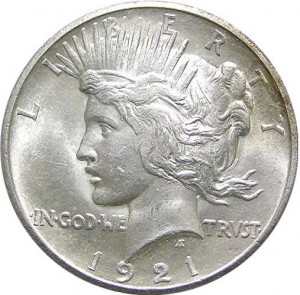 Several readers asked about the timeline for the president’s signature on H.R. 6192, 1921 Silver Dollar Coin Anniversary Act, and whether he signed the bill.
Several readers asked about the timeline for the president’s signature on H.R. 6192, 1921 Silver Dollar Coin Anniversary Act, and whether he signed the bill.
- H.R. 6192: 1921 Silver Dollar Coin Anniversary Act
Sponsor: Rep. Andy Barr (R-KY)
Passed the House of Representatives — Sep 22, 2020
Passed the Senate with amendments — Dec 17, 2020
LAST ACTION: Presented to President. — Dec 24, 2020
According to the Government Printing Office, the United States government’s official publisher, H.R. 6192 was presented to the president on December 24, 2020. The U.S. Constitution, Article I, Section 7, Clause 2 says that the president has ten days to act. If the president does not sign the bill and Congress is in session, the bill becomes law without the president’s signature. If Congress adjourns during that ten-day period, an unsigned bill is vetoed, called a pocket veto.
Documents from the Justice Department notes that the ten-day period does not include Sunday. A follow-up call to the Justice Department noted that Christmas Day does not count as part of the ten days, but New Years Day counts. The Clerk of the House’s office confirmed this information.
The president has until Wednesday, January 6, 2021, to act on the bill. If he does not sign H.R. 6192 into law, it will be the victim of a pocket veto since the 116th Congress formally adjourned sine die (without a date) the morning of Sunday, January 3, 2021, as constitutionally required.
Since watching numismatic legislation has been a feature of the Coin Collectors Blog (since 2005), the White House Press Office would post bill signings on whitehouse.gov. Unfortunately, the current administration has provided uneven coverage of bill signings not in the news. The GPO will probably publish this news before the White House releases the information.
When in the Course of human events…
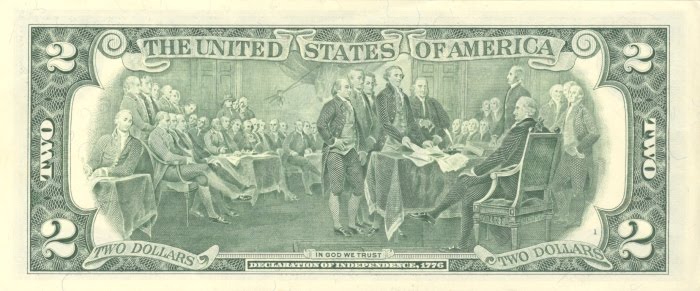
 The Continental Congress met on July 1, 1776 to take up the resolution of Richard Henry Lee, a delegate from Virginia. Lee had brought with him a resolution from the Virginia Convention to “propose to that respectable body to declare the United Colonies free and independent states” that was first heard on June 7, 1776. The July 1 meeting was the culmination of the resolution being documented by John Adams (Massachusetts), Roger Sherman (Connecticut), Benjamin Franklin (Pennsylvania), Robert R. Livingston (New York), and Thomas Jefferson (Virginia). Although the document went through some editing by Franklin and Adams, it was still Jefferson’s words that rang forth:
The Continental Congress met on July 1, 1776 to take up the resolution of Richard Henry Lee, a delegate from Virginia. Lee had brought with him a resolution from the Virginia Convention to “propose to that respectable body to declare the United Colonies free and independent states” that was first heard on June 7, 1776. The July 1 meeting was the culmination of the resolution being documented by John Adams (Massachusetts), Roger Sherman (Connecticut), Benjamin Franklin (Pennsylvania), Robert R. Livingston (New York), and Thomas Jefferson (Virginia). Although the document went through some editing by Franklin and Adams, it was still Jefferson’s words that rang forth:
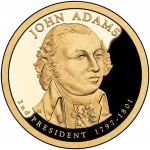 Asserting their right of freedom from the “the establishment of an absolute Tyranny over these States” was a bold move of this body. One that could land every one of them in jail, ruined, tortured, or dead. But these men, some of great means, risked everything and pursued a path of freedom and justice.
Asserting their right of freedom from the “the establishment of an absolute Tyranny over these States” was a bold move of this body. One that could land every one of them in jail, ruined, tortured, or dead. But these men, some of great means, risked everything and pursued a path of freedom and justice.
Accusing the King of crimes against the colonies and using his whim, and not laws, to rule the colonies was as immoral as it was illegal. Taxation without representation, the right to govern oneself, housing militia without permission, restricting trade, and suspending trial by jury were some of the accusations levied against the crown.
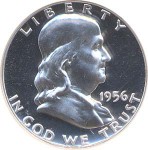 Even as Benjamin Franklin sought to try to negotiate with the King and his representatives, Franklin toiled with the Continentals as he saw that the King’s court was not negotiating in good faith.
Even as Benjamin Franklin sought to try to negotiate with the King and his representatives, Franklin toiled with the Continentals as he saw that the King’s court was not negotiating in good faith.
With a final unanimous vote, Richard Henry Lee’s resolution was passed on July 4, 1776. Copies were engrossed over night and formally signed on July 5, 1776 before being dispatched to the colonies.
On this, the 238 anniversary of the signing of the Declaration of Independence, may you revel in the accomplishment and pray for peace in our time.
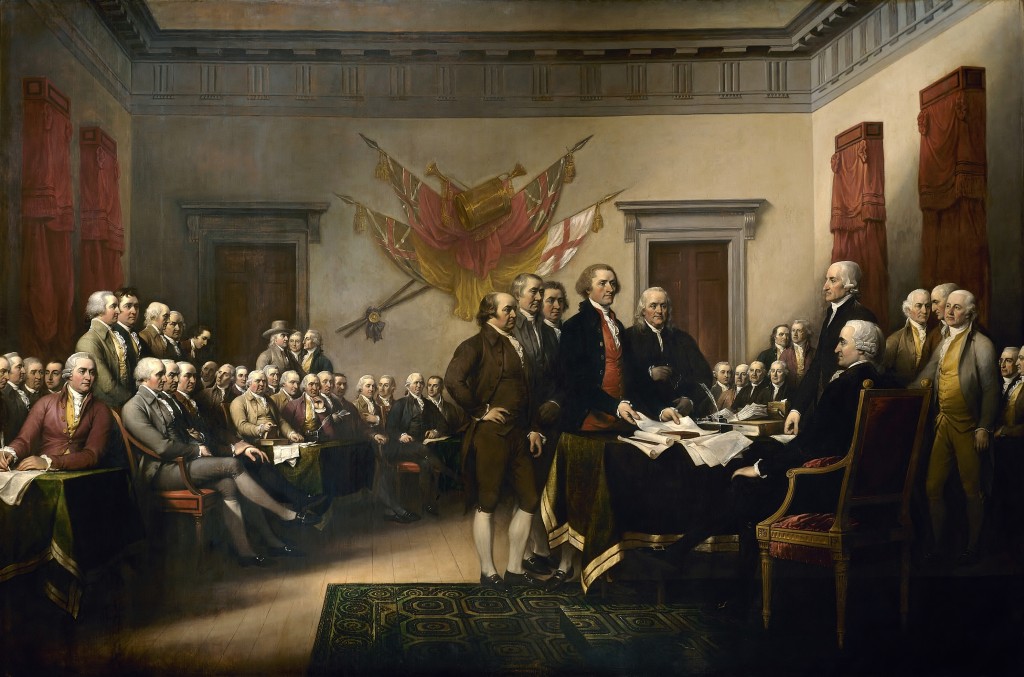
John Trumbull’s Declaration of Independence hangs in the U.S. Capitol Rotunda. It was used as the model for the reverse of the $2 Federal Reserve Note.
John Adams $1 coin image courtesy of the U.S. Mint.
All other images courtesy of Wikimedia Commons.
U.S. Mint goes JFK crazy!
The coin that seems to be the most anticipated is the 50th Anniversary Kennedy Half-Dollar Gold Proof Coin (U.S. Mint product code K15) that will be struct at the West Point facility using three-quarters of a troy ounce of .9999 fine, 24-karat gold. The dual-dated coin will be encapsulated and issued in a wood box, probably similar to the wood boxes used for past special issue gold coins starting with the 2009 Ultra High Relief Gold Coin.
Sales of the gold coin will begin on August 5, 2014 at noon Eastern Daylight Time through the U.S. Mint’s online catalog or by phone. They will also sell the coin at the 2014 Chicago World’s Fair of Money in Rosemont. The price will be set based on the prevailing price of gold when the sale begins. If you want to anticipate the costs, you can see the U.S. Mint 2014 Pricing of Numismatic and Commemorative Gold and Platinum Products. [PDF]
Fans of silver coins and the variations on the silver design will have to wait until the Fall for the release of the 50th Anniversary Kennedy Half-Dollar Silver Coin Collection. The four coin set will include 90-percent silver coins from each of the U.S. Mint’s facilities in four different styles:
- One reverse proof coin from West Point
- One proof coin from Philadelphia
- One enhanced uncirculated coin from San Francisco, and
- One uncirculated coin from Denver.
The press release says that the “encapsulated coins are secured in coin wells within an embossed leatherette-type folder that includes the same image of John F. Kennedy that appears on the coins in this set, with patriotic imagery of stars and stripes.” Since this sounds like a new packaging style, we may have to wait until the set is released to truly understand the presentation.
Finally, for the budget conscious, the 50th Anniversary Kennedy Half-Dollar Uncirculated Coin Set will feature two uncirculated half-dollars from Philadelphia and Denver in a commemorative folder. Although the set will go on sale on July 24, 2014, the U.S. Mint has created a catalog page for the set.
Are you going to buy any of the 50th Anniversary Kennedy Half-Dollar tribute coins?
Total Voters: 132
If it’s Charm City it must be Whitman
This year, as president of the Maryland State Numismatic Association, I get to preside over the Sixth Annual MSNA Distinguished Lecture. Our speaker is Dave Schenkman, a highly respected numismatic researcher and a recognized authority on United States tokens. Dave’s lecture is titled “Collecting by the Numbers: A Look at Trade Token Denominations.” His lecture begins at 1 PM on Friday, June 27, 2014 (today) at the Baltimore Convention Center. If you are in the area, please come hear what Dave has to say.
Otherwise, watch my Twitter and Pinterest feeds for information and images from Baltimore. I will have a report about the show over the weekend.
Yes, the law allows the U.S. Mint to do it
It has been an ongoing theme written on this blog, the latest was about the nonsensical $1 Trillion coin, is that all you have to do to understand what the U.S. Mint can and cannot do is clearly documented in Title 31, Section 5112 of the United States Code (31 U.S.C. § 5112), Denominations, specifications, and design of coins.
You can read Section 5112 without having to obtain a law degree. It is very readable. It is the section that covers all of the specification for every coin struck by the Mint. It describes the size, weight, content, and the design of the coin. Very little is left up to the Mint in coinage design. But as the U.S. Mint is run by fallible humans, these laws were written by even more fallible humans: congress. This means that some of the laws are very clear while others are open to some interpretation.
First, it has been questioned whether the U.S. Mint can strike more 2014 National Baseball Hall of Fame commemorative coins since they sold out of the gold and silver coins. The answer to that question can be found in law (31 U.S.C. § 5112(m)). This is the section that describes the legal requirements for commemorative coins. Paragraph (2)(B) (31 U.S.C. § 5112(m)(2)(B)) says (emphasis mine):
If the Secretary determines, based on independent, market-based research conducted by a designated recipient organization of a commemorative coin program, that the mintage levels described in subparagraph (A) are not adequate to meet public demand for that commemorative coin, the Secretary may waive one or more of the requirements of subparagraph (A) with respect to that commemorative coin program.
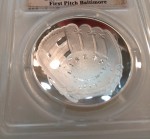
2014 National Baseball Hall of Fame commemorative silver dollars and gold commemoratives are sold out at the U.S. Mint.
As was the case with the 2005 Marine Corps Commemorative Silver Dollar, a quick sellout of the coins does satisfy the evidence necessary for the Secretary to make the decision to increase the production limits. In 2005, then Secretary of the Treasury John W. Snow authorized the U.S. Mint to produce 100,000 additional silver dollars. This was the last commemorative program sellout prior to the Hall of Fame coins.
However, the proposal to increase the production of the National Baseball Hall of Fame coins is speculation. This rumor has not been acknowledged by the U.S. Mint or the Department of the Treasury.
The other claim is that it is illegal or questionable that the U.S. Mint can produce the 2014 Kennedy Half Dollar gold coin. In an op-ed printed in Coin World, William T. Gibbs wrote, “The Mint is using what it cites as existing authority to produce a .9999 fine gold half dollar struck at the West Point Mint, with a 1964–2014 dual date and the higher relief 1964 portrait. The logic behind this coin is hard to understand. We’ve never had a gold half dollar before and the Mint’s legal authority to issue it is open to debate.”
Equating the fact that the U.S. Mint has never produced a gold half dollar coin is a parochial discussion and not whether the U.S. Mint can legally produce the coin. After all, the U.S. Mint produces quarter dollars made of five ounces of silver.
The U.S. Mint is allowed to mint the coin under the authority of 31 U.S.C. § 5112(q), the law that authorizes the Gold Buffalo bullion coin. According to the law, the U.S. Mint is only required to produce the coin with the James Earl Fraser Type 1 Buffalo design the first year. Any changes in subsequent years must then be vetted by the Citizens Coinage Advisory Committee and U.S. Commission of Fine Arts.The same questions were raised when the U.S. Mint issued the 2009 Ultra High Relief Double Eagle Gold Coin. The coin was based on the 1907 design by Augustus Saint-Gaudens was produced in .9999 fine gold and was issued under the Gold Bullion Coins provision of the law (31 U.S.C. § 5112(q)).
Gibbs further says, “When the Mint struck gold versions of the 2000 Sacagawea dollar and announced plans to sell them to the public, Congress stopped the Mint, stating that Mint officials lacked constitutional authority to issue the dollar coin in gold” as an additional argument against the U.S. Mint producing the Kennedy gold coin. In 2000, the law authorizing the U.S. Mint to strike 24-karat coins did not exit. The Buffalo Gold Bullion coin program that the decision is based was signed into law on December 22, 2005 as part of the Presidential $1 Coin Act of 2005 (Public Law 109–145 [PDF]).
The U.S. Mint may not be the most perfect agency and you may not like their decisions, but to accuse them of questionable legal practices is a bit naive.
Will you buy the 24-karat gold Kennedy half dollar tribute coin?
This will be the third time that the U.S. Mint has launched a gold coin at a coin show. Last year, the U.S. Mint sold out of the 2013 Reverse Proof 24-karat Gold Buffalo coin at the World’s Fair of Money. They received a secondary shipment which also sold out. Similarly, the National Baseball Hall of Fame commemorative was sold at the Whitman Coin and Currency Expo this past March. It also sold out even after receiving a secondary shipment.
Although past performance does not guarantee future results, there is significant anecdotal evidence that the Kennedy gold coin will also sell very well.
So let’s see what you think. Will you buy this coin?
Are you going to buy the 2014 Gold John F Kennedy Half Dollar tribute coin?
Total Voters: 65
For those who cannot afford gold, the U.S. Mint is planning on producing silver coins with just the 2014 date. The set will feature coins from all four branch mints and include a proof coin struck in Philadelphia, a reverse proof produced in West Point, an enhanced uncirculated from San Francisco, and an uncirculated coin minted in Denver.
Although the U.S. Mint has not announced the price of these coins, they plan to place order limits to prevent the situation that happened with the National Baseball Hall of Fame commemorative coin that appears to have been bought out by dealers.






